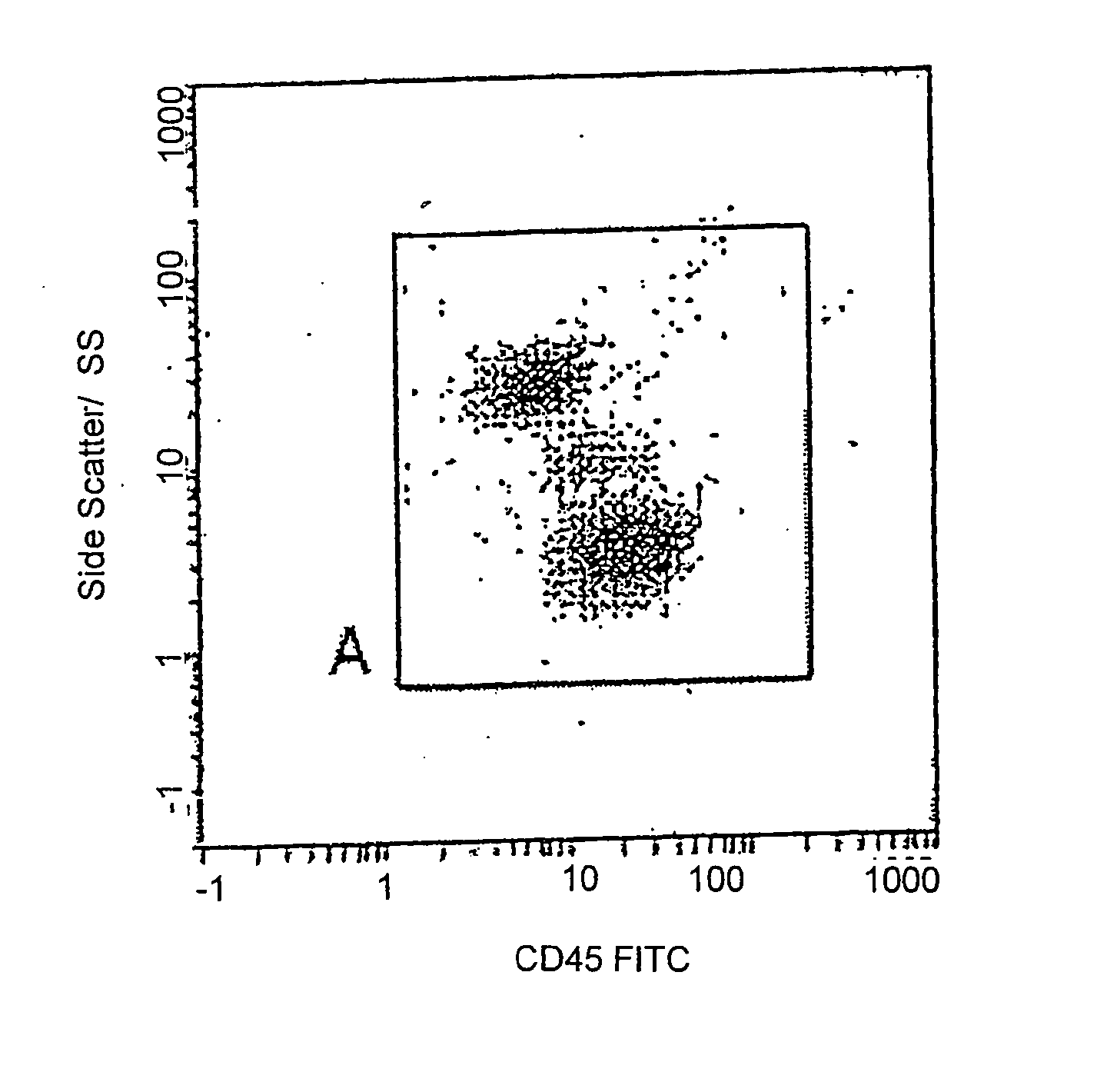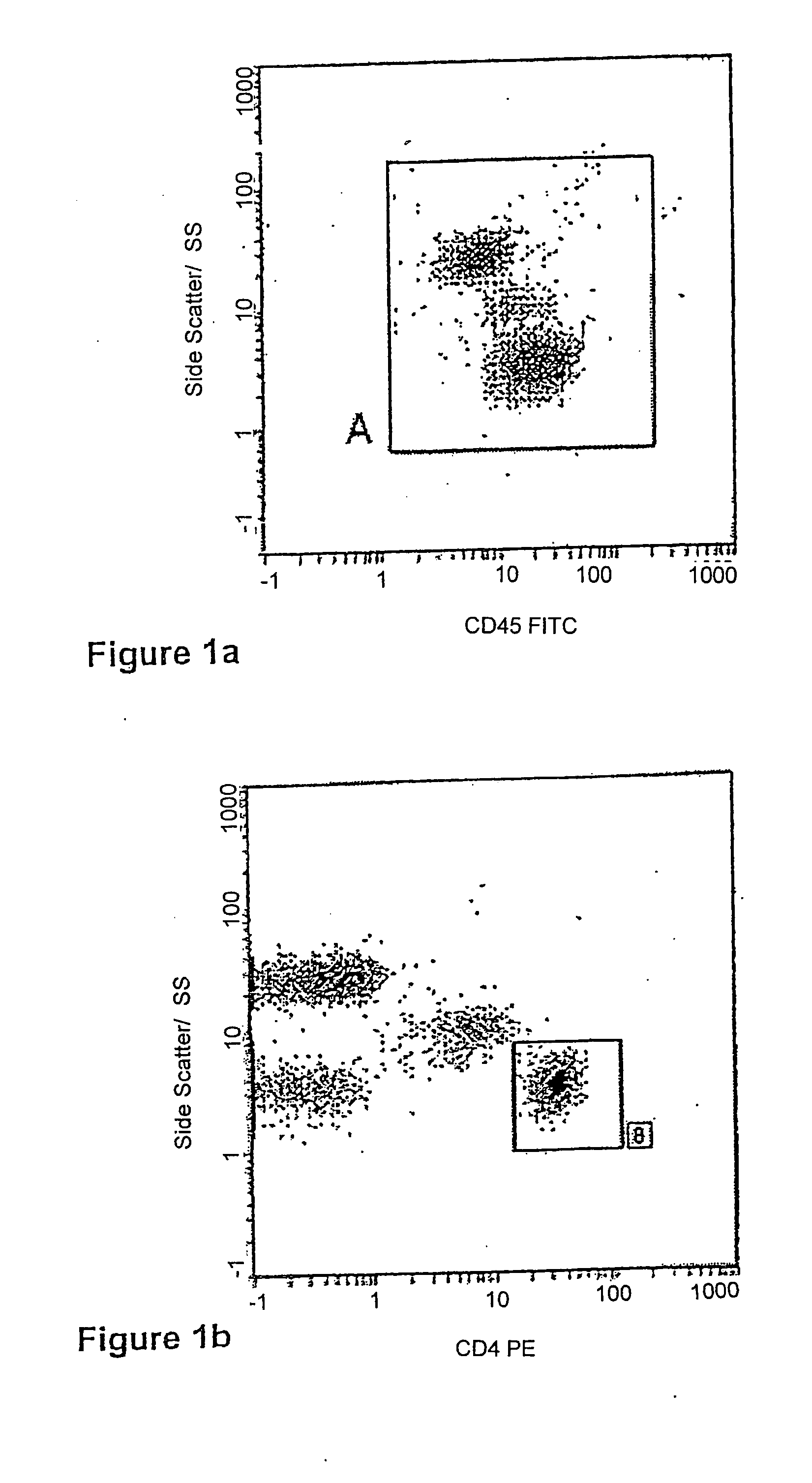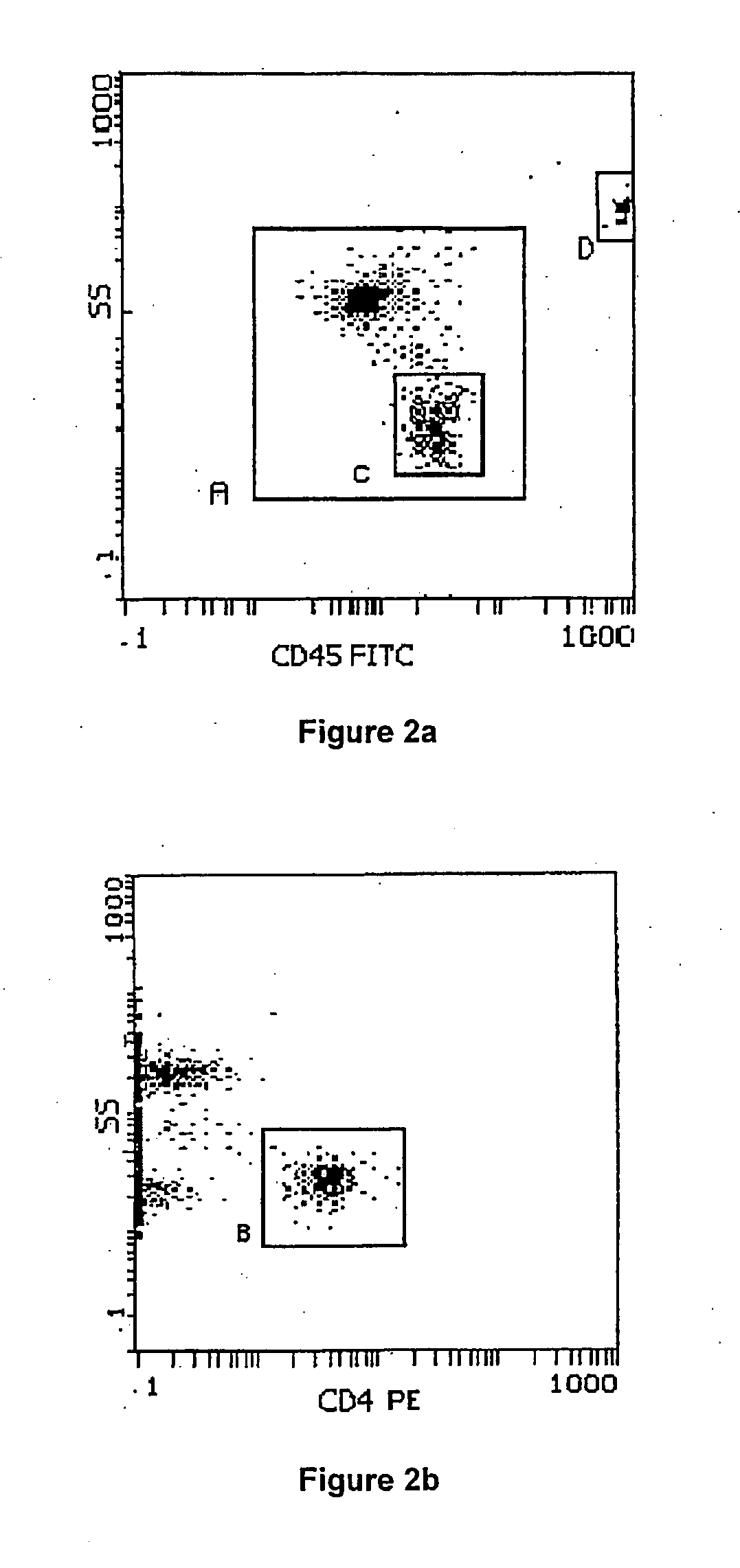Enumeration of CD4+lymphocytes
a lymphocyte and cd4 technology, applied in the field of cells, can solve the problems of poor cellular definition, limited quality control, and less widespread use of methods
- Summary
- Abstract
- Description
- Claims
- Application Information
AI Technical Summary
Benefits of technology
Problems solved by technology
Method used
Image
Examples
example 1
Dual-platform Method
[0058] A full blood sample was collected from a consenting adult in ethylene diamine tetra-acetic acid (K3EDTA). This sample was delivered to the laboratory within 6 hours of venesection. Upon receipt in the laboratory the sample was subjected to a white blood cell count performed on a Beckman Coulter GenS™ hematology analyzer. A white cell count of 4.80×109 / l was obtained.
[0059] Appropriate external quality assessment and internal quality control as recommended by the supplier was performed daily on this instrument to ensure that the white cell count was accurate and precise.
[0060] After the white blood cell count was obtained, blood taken from the same sample was prepared for flow cytometric analysis. Flow cytometric preparation involved dispensing a well-mixed 100 μl aliquot of whole blood into the bottom of a 12×75 mm test tube. Anti-CD4 phycoerthryrin (PE) monoclonal antibodies and CD45 Fluorescein-isothiocyanate (FITC) monoclonal antibodies were added (b...
example 2
Single-platform Method
[0091] A full blood sample was collected in K3EDTA from a consenting adult patient. This sample was delivered to the laboratory within 6 hours of venesection. Upon arrival in the laboratory the sample was prepared for flow cytometric analysis. Flow cytometric preparation involved dispensing (by reverse pipetting) a well-mixed 100 μl aliquot of the sample (whole blood) into the bottom of a 12×75 mm test tube.
[0092] Anti-CD4 PE monoclonal antibodies and CD45 FITC monoclonal antibodies were added (both obtained from Immunotech, Beckman Coulter, Inc., Miami, Fla.) according to the supplier's recommendations and incubated for 10 minutes at room temperature, in the dark. The tube containing the 100 μl of blood with the added CD45 and CD4 antibodies was then prepared for flow cytometric analysis using the above mentioned Q-Prep / ImmunoPrep™ Reagent System and Workstation, as directed by the supplier.
[0093] After this whole blood preparation step, which included addi...
PUM
| Property | Measurement | Unit |
|---|---|---|
| color | aaaaa | aaaaa |
| purity | aaaaa | aaaaa |
| density | aaaaa | aaaaa |
Abstract
Description
Claims
Application Information
 Login to View More
Login to View More - R&D
- Intellectual Property
- Life Sciences
- Materials
- Tech Scout
- Unparalleled Data Quality
- Higher Quality Content
- 60% Fewer Hallucinations
Browse by: Latest US Patents, China's latest patents, Technical Efficacy Thesaurus, Application Domain, Technology Topic, Popular Technical Reports.
© 2025 PatSnap. All rights reserved.Legal|Privacy policy|Modern Slavery Act Transparency Statement|Sitemap|About US| Contact US: help@patsnap.com



